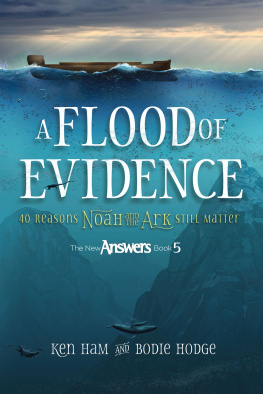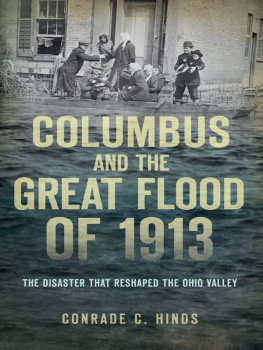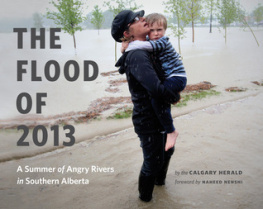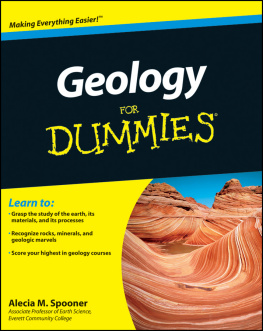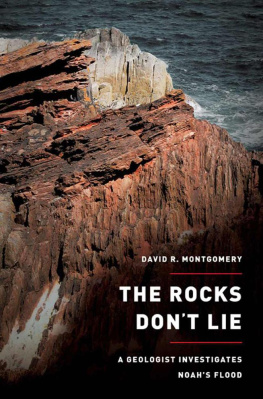First printing: June 2008
Second printing: July 2011
Copyright 2008 by Mike Oard. All rights reserved. No part of this book may be used or reproduced in any manner whatsoever without written permission of the publisher, except in the case of brief quotations in articles and reviews. For information write:
Master Books, P.O. Box 726, Green Forest, AR 72638
Master Books is a division of the New Leaf Publishing Group, Inc.
ISBN-13: 978-0-89051-523-5
Library of Congress Catalog Number: 2007939090
Please consider requesting that a copy of this volume be purchased by your local library system.
Printed in the United States of America
Please visit our website for other great titles:
www.masterbooks.net
For information regarding author interviews,
please contact the publicity department at (870) 438-5288


Dedication
This book is dedicated to Roy Holt (19552003) from Albuquerque, New Mexico, who went to be with his Lord and Savior after an unexpected coronary thrombosis. He married Melanie Joy Beenken in 1989 and they had three children: Matthew, Bethany, and Jessica. Roy was active in the Creation Science Association for Mid-America and helped found the Creation Science Fellowship of New Mexico. He wrote an alternative creationist guide to the New Mexico Museum of Natural History. Roy was an avid fossil collector. Roy would be pleased to know that his fossils and books are now in the possession of the Answers in Genesis Creation Museum in northern Kentucky.
I believe his most important creationist achievement was the publication of the 40-page article in Creation Ex Nihilo Technical Journal showing with meticulous science that the Flood/post-Flood boundary is in the very late Cenozoic, mainly in the early to mid-Pleistocene in areas not associated with the Ice Age (Holt, 1996). I have come to a similar conclusion from almost independent data, mainly based on the results of my study of the geomorphology that makes up this book.
I greatly respect Roys other creative ideas in creationism, in particular his idea that during the Genesis flood the land and sea reversed their roles . He had planned to flesh out this idea in the future, but poor health prevented him. The idea is provocative. In the future, I would like to examine this idea more thoroughly. He will be missed by myself and many others.
He cutteth out rivers among the rocks; and his eye seeth every precious thing. Job 28:10
Acknowledgments
Many people have contributed to my thinking on geomorphology. It was actually a uniformitarian geologist who first called my attention to this gold mine for Flood geology. Although he thought planation surfaces would challenge the Flood paradigm, I soon found out that they were a challenge to the uniformitarian paradigm and are readily explained by Flood runoff.
I especially thank my wife, Beverly, for going over the English and improving the readability of the manuscript. Of all the creationists, it was Peter Klevberg who contributed most to my study of geomorphology. We have been out in the field and have worked on numerous papers together. I also appreciate the enthusiasm of John Hergenrather on the subject of geomorphology, especially in our work with far-traveled quartzites. I thank Dennis Bokovoy, Harold Coffin, and Dave Andersen for sharing ideas out in the field on geomorphology.
I also want to thank Tas Walker and John Reed for reviewing an earlier draft and their encouragement during the writing of the book. I again thank Tas for writing the foreword. I have simply fleshed out his ideas on the Retreating Stage of the Flood. And I also thank John for writing the endorsement on the back of the book.
I thank Emil Silvestru, John Whitmore, Peter Klevberg, and Carl Froede for reviewing parts of the manuscript. I appreciate the efforts of Gorman Gray for providing uniformitarian opinions on my planation surface ideas.
Over the years, I have had several artists draw or modify illustrations. I would like to thank Bryan Miller of Master Books for doing most of the schematics in the book. I also thank my son, David, my son-in-law, Mark Wolfe, and Daniel Lewis of AiG for providing the first drafts of some of the illustrations. I appreciate the work of Peter Klevberg on the water gap and pediment schematics, and the original schematic for the origin of submarine canyons. Thanks also go to AiG, Ruben Berra, Russ Humphreys, Tas Walker, Carl Froede, and Dennis Bokovoy for providing some of the photos and illustrations.
And the waters prevailed exceedingly on the earth, and all the high hills under the whole heaven were covered. Genesis 7:19
Table of Contents
Foreword
This book by Mike Oard about the Retreating Stage of Noahs flood contains powerful evidence that the catastrophe really happened, and as a consequence, that the Bible is accurate and reliable.
The Retreating Stage of the Flood, the seven-month period when the waters of the Flood receded from the continents into the ocean basins, is the last global geological process to significantly impact our earth. And the mark it left on the landscape is still clearly visible.
This book is mainly about landscapes those eye-catching vistas we love to view and photograph, especially from the mountains or an airplane.
I once showed a familiar landscape from central Australia on a screen and asked my audience, Have you ever wondered how this landscape formed? An older lady sitting in the front row blurted out, Oh! Ive never thought of that before, and caused fits of laughter in those around her.
In fact, although we are familiar with landscapes, most of us have never thought about how they formed. We tend to look to the professionals, imagining it is too complicated for mere mortals like us. Consequently, we do not appreciate that landscapes are larger-than-life monuments to the Genesis flood. It is sobering when we think that the evidence was there all the time, a silent sentinel, but we did not see it because of the busyness of our lives and our trust in the experts.
That is one reason I found Mike Oards book so powerful. He describes things that ordinary people can see when they drive around the countryside, stand at a lookout, study a map, or watch a movie. To appreciate the thrust of Mikes case, you do not need to be especially trained in geology or geochronology, or to be familiar with rubidium/strontium dating or other complex-sounding scientific ideas. You just have to look around, carefully observe the amazing landforms in your world, and imagine what happened in the past, using your common sense.
Although Mike deals with well-known landforms, he reveals a well-kept geographical secret that the common landforms in the world today are still not satisfactorily explained after almost 200 years of study. That includes mountains, plateaus, water gaps, valleys with vertical walls, the continental shelves, and more. And he shows why; its because the underlying philosophy used by mainstream geologists and geographers does not work.
That is another reason why I found Mikes book so interesting like a breath of fresh air. Rather than traveling down the old familiar dead ends, it is fascinating to begin with his different starting point biblical history and see that this method does explain the evidence. And we dont have to take Mikes word for it; we can see it for ourselves.
Mike Oard is eminently competent to author this work. He has spent a lifetime studying earth science, including geology and geomorphology, and he is up to date in the geological literature, both mainstream and creationist. His knowledge is both broad and detailed. He has extensive hands-on field experience, having undertaken geological expeditions in the United States, Canada, and Australia.



